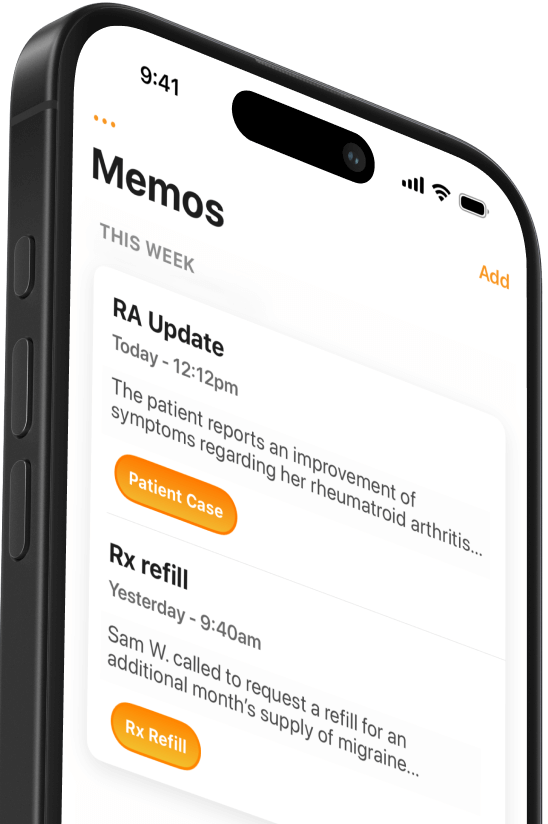What is disruptive healthcare technology?
Disruptive health tech—from wearables to AI—creates new care models and challenges institutions to evolve for better outcomes.


Popular articles
You might have heard the term “disruptive innovation” in discussions about healthcare and technology. What is disruptive technology, and what does it mean for healthcare?
Disruptive innovation defined
A new product, service, or business model is considered “disruptive” when it helps create a new market, eventually disrupting existing markets and displacing previous technologies.
Clayton Christensen coined the term “disruptive innovation” in 1995. At the time, Christensen was a Harvard Business Professor studying how and why certain innovations transform industries.
Disruptive innovation has happened over and over, in industries like computing, photography, telecommunications, and retail. Studies of these industries reveal two important facts about disruptive innovation:
- The change resulting from disruptive innovation has always been positive, leaving us with better products and services than before.
- It is usually new entrants into the market that figure out a better way of doing things.
Of course, disruptive innovation, like any transformation, has winners and losers. Powerful institutional forces fight simpler alternatives because innovations challenge their livelihoods.
Disruptive technology in healthcare
In the early 2000s, the healthcare industry was ripe for disruptive innovation. As Christensen and colleagues wrote in a 2000 article in the Harvard Business Review, “Health care delivery is convoluted, expensive, and often deeply dissatisfying to consumers.”
The authors said that a whole host of disruptive innovations could end the crisis - but only if entrenched powers got out of the way and let market forces play out.
“If the natural process of disruption is allowed to proceed,” they wrote, “we’ll be able to build a new system that’s characterized by lower costs, higher quality, and greater convenience than could ever be achieved under the old system.”
As predicted, we've seen dramatic changes due to disruptive technology in healthcare. Providers have adopted electronic health records, patients can view their records via online portals, and smartphones have changed the ways we access, deliver, and document care.
Still, it's best to think of disruptive innovation as an ongoing process. The nature of technology means that new innovations are always shaking things up.
Where is disruption happening now?
Just as Christensen and colleagues wrote in the early 2000s, startups and new entrants often drive disruption in healthcare. NEJM Catalyst recently surveyed healthcare executives, clinical leaders, and clinicians, who concluded that disruptive innovation in healthcare will come from beyond traditional organizations. “Whether talking about disruptive innovation in hospitals, health care IT, or primary care," they conclude, "respondents say focused start-ups will lead the way.”
“Whether talking about disruptive innovation in hospitals, health care IT, or primary care, respondents say focused start-ups will lead the way.”
A review of 400 digital technology projects and collaborations agrees: startups offer higher promises of disruptive innovation. As the authors write, "established corporations rely more on incremental innovation that supports their current business models, while start-ups engage their flexibility to explore new market segments with notable transformations of established business models."
While focused startups will bring innovation, those in the field agree that hospitals and health systems are the sectors most in need of disruption. Next on the list are healthcare IT, primary care, and pharmaceuticals.
Examples of disruptive healthcare technology
Disruption is happening everywhere in healthcare - from AI to mHealth to 3D printing and robotics. Here are a few contemporary examples of disruptive healthcare technology:
- Consumer devices, wearables and apps - In the past, patients could only get biometric data when they went to the doctor's office. Now health data gathered from smartwatches and mobile fitness trackers allow consumers to play a new role in their health journey.
- AI and machine learning - AI applications are everywhere in healthcare, from patient intake to predictive analytics to new drug develompment. This technology is changing how health systems operate and how care is delivered.
- Telemedicine - COVID-19 accelerated the expansion of telemdicine, but with long-ranging impacts. Most patients say they are interested in virtual care going forward.
- Blockchain - Blockchain is a database technology that stores data in a way that enhances security and usability. This innovation is changing many aspects of healthcare, including patient records, supply and distribution, and research.
These are just a few examples of technologies creating new markets and changing the way healthcare happens.
How disruptive innovation happens
In addition to technological innovation, experts say there are two processes that often facilitate disruption in healthcare specifically.
1. Decentralization
The first is decentralization. Disruption typically involves new market entrants creating products that bring in new consumers. But in healthcare, everyone is already a consumer. In healthcare, disruption often shifts care from hospitals to clinics and office settings, and even into patients’ homes. Telemedicine is the most obvious example.
2. Transference of skills
The second process is matching clinician’s skill level with the difficulty of the medical problem. This means transferring skills from highly trained, expensive personnel, to more affordable providers, including technology-based care. This helps address expensive care due to overshoot of patient needs by health care institutions.
Disruptive innovation is necessary, says Christensen, both for the healthcare industry and to improve patient care. But it's only possible in the right environment. "Instead of working to preserve the existing system," Christensen and colleagues conclude, "health care regulators need to ask how they can enable disruptive innovations to emerge."
Related Articles


We Get Doctors Home on Time.
Contact us
We proudly offer enterprise-ready solutions for large clinical practices and hospitals.
Whether you’re looking for a universal dictation platform or want to improve the documentation efficiency of your workforce, we’re here to help.





